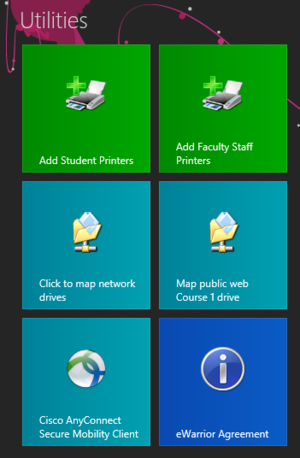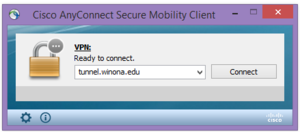Difference between revisions of "VPN"
Jump to navigation
Jump to search
| Line 1: | Line 1: | ||
| + | {{TOC_Float_Right}} | ||
[[File:cisco_logo.jpg|100 px|right]] | [[File:cisco_logo.jpg|100 px|right]] | ||
'''VPN''' stands for Virtual Private Network. Using the Cisco AnyConnect VPN client software, you can connect a [[WSU]] laptop to the WSU [[network]] from off campus. This software is already installed on all WSU laptops. A VPN connection enables you to access select network resources as if you were on campus connected to our network directly. The data is encrypted to preserve security. This includes: | '''VPN''' stands for Virtual Private Network. Using the Cisco AnyConnect VPN client software, you can connect a [[WSU]] laptop to the WSU [[network]] from off campus. This software is already installed on all WSU laptops. A VPN connection enables you to access select network resources as if you were on campus connected to our network directly. The data is encrypted to preserve security. This includes: | ||
Revision as of 17:22, 1 July 2015
VPN stands for Virtual Private Network. Using the Cisco AnyConnect VPN client software, you can connect a WSU laptop to the WSU network from off campus. This software is already installed on all WSU laptops. A VPN connection enables you to access select network resources as if you were on campus connected to our network directly. The data is encrypted to preserve security. This includes:
- Network storage drives (e.g., personal, class, departmental)
- KeyServer applications (e.g., Adobe Photoshop, Adobe Acrobat)
Find the VPN Client (Cisco AnyConnect) on Your WSU Laptop
On a PC (Windows 8.1)
- From the Windows Start Screen
- Use the Cisco AnyConnect Tile under the Utilities section
- Choose Connect in the menu below:
- Use your full WSU email address to login with.
On a PC (Windows 7)
If you go to your Start Menu, and search for "Cisco" in the search bar.
On a Mac
- Go to Applications folder
- Find the Cisco icon
- Use your full WSU email address when prompted to login


